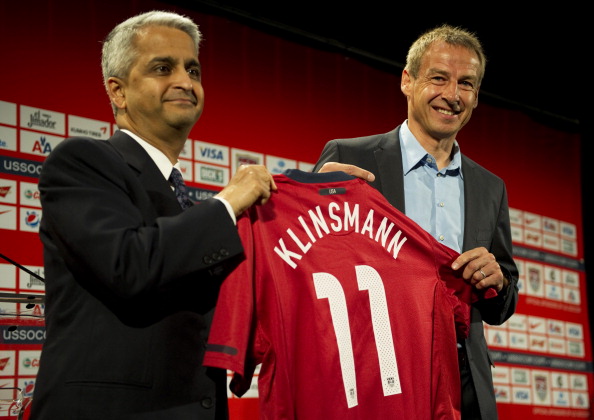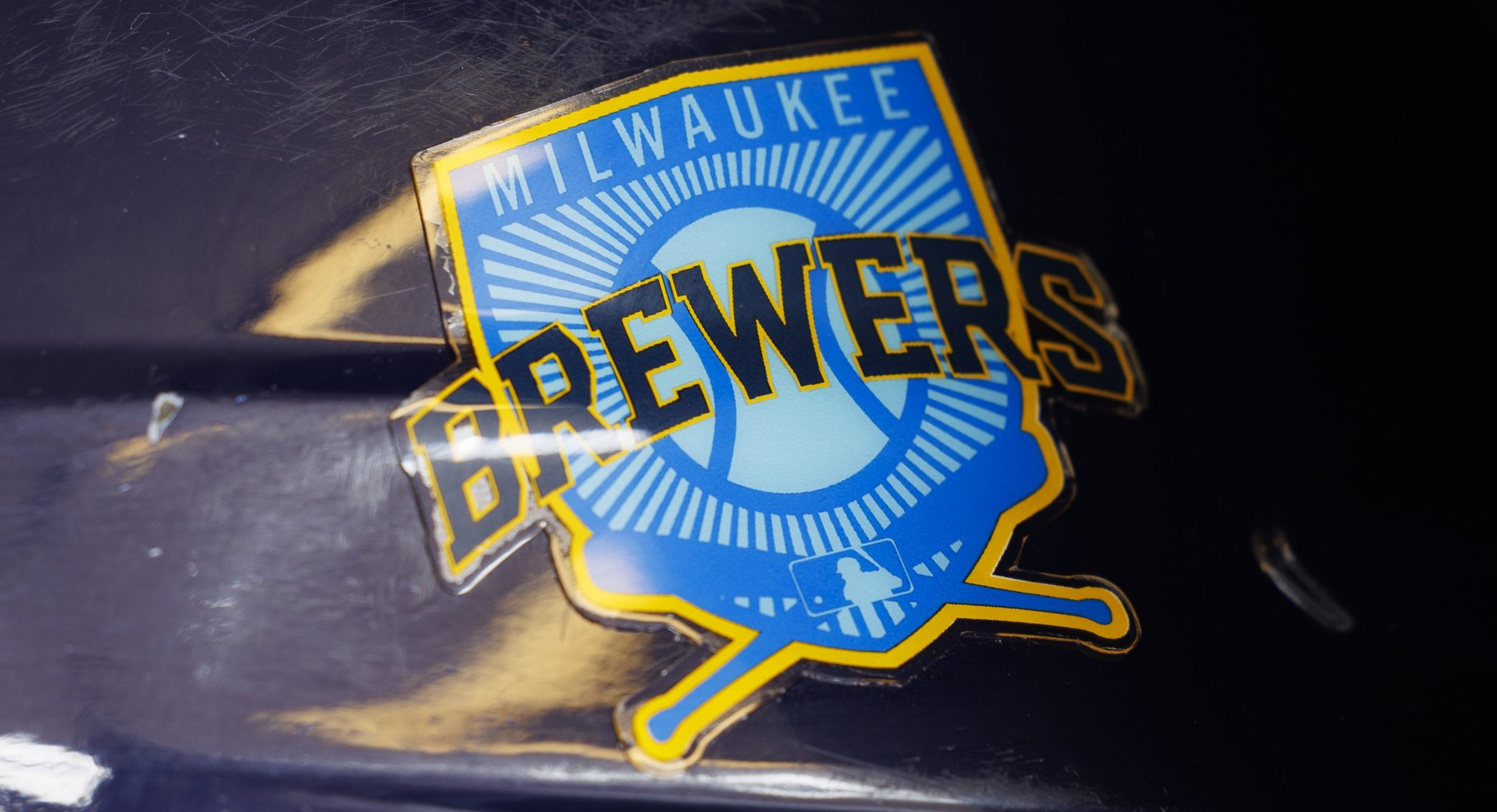Jurgen Klinsmann was hired to transform the entire US Soccer program and take it to the next level into the world’s elite. Instead, the USMNT is going backwards in order to go forwards, which perfectly describes Klinsmann’s time leading the national team.
After five years, Klinsmann is reportedly being replaced by Bruce Arena, the man who coached the USMNT 10 years ago. It’s a fitting end to Klinsmann’s tenure that delivered much more promise than anything else actually tangible.
Klinsmann’s fate was sealed as US National Soccer coach and technical director after starting the final round of CONCACAF qualifying 0-2 in the Hexagonal. An embarrassing 4-0 loss at Costa Rica combined with the fortress of Crew Stadium in Columbus being shattered in a 2-1 home loss to Mexico brought the Klinsmann era to an end.
Already the arguments are being made to define Klinsmann’s legacy as a success or a failure and to be sure, there are cases to be made for both sides. Just looking at the timeline of his five years in charge shows an incredible amount of twists, turns, ups, and downs.
February 2012 ↑ – The USA gets their first win over Italy in a 1-0 friendly victory.
August 2012 ↑ – Klinsmann leads the USA to their first-ever win over their arch-rival Mexico at Estadio Azteca, 1-0.
September 2012 ↓ – In their next competitive game, the USA loses their first ever game to Jamaica in World Cup Qualifying.
Summer 2013 ↑ – Klinsmann leads the USA on a record 12 game winning streak including a victory over Germany and a Gold Cup triumph. That would turn out to be Klinsmann’s only trophy with the USMNT.
2014 World Cup ↑ ↓ – Klinsmann successfully leads the USA out of the Group of Death, but the team is dominated by Belgium in the Round of 16. An epic performance from Tim Howard forces extra time where the USMNT ultimately falls short and is knocked out.
Summer 2015 ↑ – The USMNT achieves several firsts in friendly victories: a win over the Netherlands, a win over the Czech Republic, a win on the road at Germany.
2015 Gold Cup ↓ – The Americans suffer an inexplicable loss at home against Jamaica in the semifinals of the North American championship, missing the final for the first time since 2003.
2015 CONCACAF Cup ↓ – In a thrilling game that went to extra time, the USMNT falls to Mexico 3-2 with a berth in the Confederations Cup and supreme CONCACAF superiority on the line.
2016 Copa America ↑ – With expectations lowered, the USMNT reaches the seminfinal of the combined North and South American tournament. However, they are blown out in the semis by Argentina in a comprehensive 4-0 defeat. The performance seemingly saves his job for the time being.
Fall 2016 ↓ – Klinsmann’s reign ends with back-to-back losses in World Cup Qualifying to Mexico and Costa Rica.

Under Klinsmann it always seemed to be one step up and one step back, but the end result after five years is that the national team is pretty much where they were when he arrived in 2011. And maybe that is what defines the legacy as a disappointment and a missed opportunity more than anything else, because a net gain of zero is not what was hoped for when Klinsmann arrived.
Perhaps the defining quality of Klinsmann as USMNT coach (55-28-18 in 95 games, putting his win percentage right between Bruce Arena and Bob Bradley) is that the best results often came in friendlies and not meaningful tournaments. The USMNT did not achieve any bests at the World Cup, failing to match what Bruce Arena did by reaching the quarterfinals in 2002. Furthermore, they failed in places where they had been dominant — in the Gold Cup, in Columbus, etc.
When Klinsmann was named coach and technical director, he came with a promise of a new brand of attractive, attacking, American soccer. This was to be not just a managerial change from the more stoic Bob Bradley, but a revolution of sorts. The German star came with the idea that he would overhaul the entire US Soccer system so that we could finally develop world class athletes into world class soccer players that would lift the World Cup trophy.
Again, the vision was not realized and always sounded better and more idealistic in theory than it ended up achieving being in practice.
Here’s a Klinsmann profile from The New Yorker in 2014.
It’s hard to say the USMNT ever developed an “American style” under Klinsmann. The “entrepreneurial culture” sure didn’t show up in the biggest games against teams like Belgium or Argentina or even Mexico. And it’s impossible to say that Klinsmann really implemented anything lasting in terms of identity or system at the senior level, especially considering that after five years at the helm his team debuted an experimental 3-5-2 against Mexico in Columbus that the players looked like they saw for the first time an hour before kickoff.
Is the USMNT more assertive than they were five years ago? More creative? More successful? In any tangible, transformative way, the answer has to be no.
But perhaps even more disappointing than the senior team’s results is what has happened at the underage levels of US Soccer. Remember, that was an even bigger selling point under Klinsmann — the US would build from the ground up with youth development to ensure that this was a generational movement forward and not just something temporary.
https://youtu.be/VH5z-K2itQo
Once more, the impact was over-sold and under-delivered.
The USA has failed to qualify for the last two Summer Olympics with their U-23 team. The U-20 team reached the group stage and quarterfinal of the 2013 and 2015 U-20 World Cup, which is exactly what they accomplished in 2007 and 2009 respectively. The U-17 squad hasn’t gone forward either at their age bracket in the World Cup.
There are plenty of other things you can take issue with regarding Klinsmann: his selection policies, his tactics, his lack of taking responsibility and throwing players under the bus, his criticism of MLS, his broken relationship with Landon Donovan, and much more. But beyond all the controversies and questions there was always hope that something was coming. Someday all the promising and all the dreaming and all the visioning would finally come to fruition.
Well, sometimes someday never comes. And the US National Team is left where they were five years ago and maybe even five years before that. And this time, American soccer fans will trade in all of that hope and change for just a few more wins when it matters.







